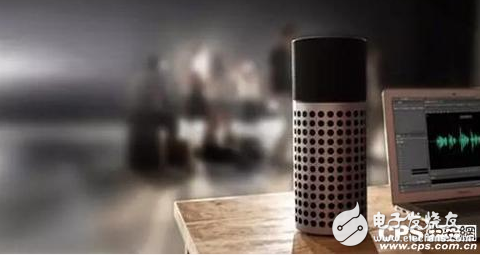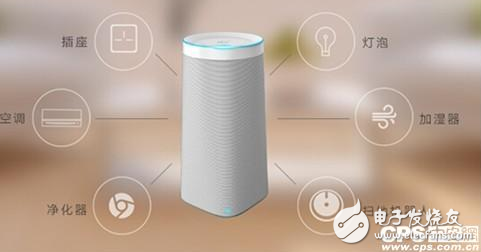After Amazon Echo became popular, Apple, Google, and Microsoft entered the game one after another. In China, smart speakers have become a giant's game. JD.com, Alibaba, Tencent, Lenovo, Himalaya, Xiaomi, HKUST Xunfei and other companies have all deployed smart speakers. Established manufacturers Lenovo, Haier, international audio giant Sony and even mobile operators China Mobile and China Telecom have launched their own brands. Smart speakers, smart speakers have become a cross-industry and cross-domain product.
Rarely, entrepreneurs have actually become marginalized roles on the smart speaker track.

When all the giants are fully betting on this track or even personally, this level of war, if startups rush forward, it is easy to become cannon fodder.
Because the emerging category of smart speakers has localization thresholds, it has blocked the entry of Amazon and Google, leaving room for domestic players such as Baidu, Xiaomi, Ali, and Tencent.
Through price wars, large companies have lowered the threshold for consumers to this category to 99 yuan and 299 yuan. At present, BATs are all combining their existing advantages. In terms of algorithm technology, hardware solutions, and content integration, giants including BAT, iFLYTEK, and JD.com have not left much room for startups.
The giant price war is bad news for most entrepreneurs
On the one hand, the giants are not making smart speakers to make hardware profits, but to be the traffic portal for voice interaction platform-level products, relying more on content to make money. Entrepreneurs who make speakers lack resources in terms of music copyright content alone. Small and medium-sized companies that sell smart speaker hardware as their only profit point can hardly escape the super-low prices of giants and are easily dragged down.
Compared with giants, startups lack content ecosystems and barriers similar to giants, and they are completely uncompetitive in terms of content resources. Even if you make a smart speaker, you have advantages in speech recognition and semantic understanding, but the gap between content resources such as music and information is too large, and it is difficult for consumers to buy it.
According to data provided by the industry, there are 50 to 100 smart speaker manufacturers in China. Among them, entrepreneurs should still account for the majority, but if the shipment orders cannot keep up, in this case, based on the ratio of the cost of mass production to the investment income, there may not be many OEMs willing to take orders, so their supply A series of issues such as cargo capacity, yield, product iteration, profit, and cash flow will follow.
The giant price war is obviously forcing entrepreneurs without capital to leave the field of hardware terminals. This essentially suppresses the enthusiasm of small players to make various cooler innovations on smart speakers, and it is also not conducive to financing.
Especially at the level of music copyright, the most common music function of smart speakers, according to the industry, sales of less than 100,000, basically large music copyright agencies will not cooperate. A smart speaker has no music copyright, and the most basic competitiveness of the speaker is also missing.

Under the full firepower of the giants, entrepreneurs need to find another way
Therefore, for start-up companies, under the full firepower of the giants, they need to find another way to find their own living space from the perspective of the industrial chain.
Because as mentioned above, for small and medium-sized companies, if they want to compete with giants in terminal products, the final result may be a cannon fodder. After all, the strategic value and importance of this track is no longer the VR and bracelet of the year. Other products can be compared, because smart speakers are the first-generation commercial landing products for voice interaction, no giant is willing to miss this outlet.
From the Tmall Genie X1 big promotion to the Xiaomi speaker, Xiaomi Ali and other giants can sell at the cost or even lower than the cost. The price war of 99 yuan is not something small and medium-sized startups can play. If small and medium-sized companies want to take a share in the smart speaker industry chain, they can only enter the game from the positioning of supporting roles in the upstream and downstream of the industry chain.
Because if an emerging industry in the hardware field will explode in the future, platform-type giant companies will inevitably appear. Then hardware or component manufacturers or content manufacturers scattered throughout the industry chain will inevitably enjoy this wave of dividends, such as in the field of smartphones. , Apple has spurred the prosperity of assemblers and chip manufacturers such as Foxconn and TSMC.
The layout of smart speakers should be the same. Entrepreneurs should think clearly about their own advantages, and focus on the core advantages of the layout.
Cut into a certain key technical field or a certain division of labor in the smart speaker industry chain
From the perspective of the smart speaker industry chain, there are roughly several major types of chip vendors, solution vendors, voice platform vendors, terminal vendors, and content vendors. The release of a smart speaker terminal product requires multiple industrial chain links. Solution providers need to make speaker solutions. They need to get chips from Intel or MTK, Amlogic, microphone arrays from a certain manufacturer, access content from content providers such as Tencent Music, Toutiao, Himalaya, Google Assistant or AmazonAlexa, Baidu DuerOS, The voice platform of IFLYTEK and other manufacturers then assembled a speaker.
For entrepreneurs, the current content providers and terminal providers are basically occupied by giants, and the chance of winning is slim.
More opportunities may appear in solutions providers, voice platform providers, chip vendors and other areas to win. For example, at the chip level, even if there are big players like Intel, there are also relatively outstanding vendors such as Conexant and Allwinner. In the field of solution providers, there are also relatively mature solution providers such as Sound Intelligence Technology, Simcere Internet, and Moore Acoustics.
According to Li Hai, vice president of the Himalayas, previously broke the news: "There are 112 smart speaker solution providers within one kilometer of Nanshan District, Shenzhen." After Xiaomi released its new product "Xiao Ai" smart speakers, more than 80% of solution providers have transformed. This may be the correct path.
Many solution providers used to connect their solutions to Amazon's Alexa voice interaction platform, but now, as domestic giants flock together, solution providers have also begun to transform and start to focus on the business of domestic giants.
As the smart speaker industry chain matures and the division of labor is refined, the role of solution providers occupies a more important position in the entire industry chain. There will also be more and more entrepreneurs who are deeply involved in a certain field of dedicated voice chips, high-quality solution providers, and voice technology providers. To a certain extent, it can be seen that entrepreneurs who really find their positions have opportunities.
In addition, in a certain subdivision of key technical areas surrounding the smart speaker industry chain, such as the control center, the front-end microphone array, and the back-end semantics are all good entry points. From these perspectives, it may be able to get a share. The premise is that you have to have excellent strength.
Do business around the core match points, needs and shortcomings of the giants, and industry trends
In the well-known gold rush stories, the real earners are not the menacing gold diggers, but the people who sell the gold shovel. Obviously, the purpose of the layout of giants is not to make short-term money, but for long-term entrance and flow effects, but for entrepreneurs, can they rely on many giants, know their needs and shortcomings, and then target The needs and shortcomings of the giants come in.
At present, manufacturers have gathered together smart speakers, but ignore the consumer experience. Consumers currently generally report problems such as poor far-field recognition, high false awakening rate, unstable continuous dialogue function, poor semantic understanding, and poor sound quality. To make in-depth solutions to these problems to meet the needs of giants is a differentiated competitive strategy for the layout of the tuyere.
In addition, we will focus on the core match points of the giants for technical tackling. For smart speakers, it is critical that the voice technology module and "AI intelligence" are powerful enough, such as far-field recognition, voiceprint recognition, natural language understanding, multi-round interaction and other technological breakthroughs, service content and algorithm optimization Whether it can make machines better understand human language and other level giants may not be able to be more focused.
Entrepreneurs can focus on a few or a few of these points to make technical breakthroughs to form a core technical advantage, and then use these technologies to match the technical shortcomings of the giants and do business with these giants.
Because for the giants, they can’t do everything themselves. They are good at doing algorithms and content resource integration, but they also have many shortcomings in the industry chain that need to be done by professional manufacturers in a certain field. Better startups tend to become popular.
Earlier, a smart speaker practitioner said, “Apart from using Baidu’s open platform or going out to ask startup companies that do their own algorithms, almost all smart speaker manufacturers use iFLYTEK’s voice modules and solutions.â€
From the perspective of future trends, the interactive mode of smart speakers will still be based on voice interaction, but the auxiliary role of touch interaction should not be underestimated. The two complement each other. For example, the screen/LED dot matrix can give visual feedback to some commonly used commands, and play a role in supplementing the limitations of voice.
The combination of voice interaction and touch interaction is the future development trend of smart speakers. If it can be innovatively deployed in the field of smart speaker touch interaction technology, if it can bring users a more precise experience and complete more complex functions, it is also a kind of Feasible ideas.
In addition, from the point of view of the control center, similar to Google Home also has the ability to control smart homes, but the flaw is that there are not many devices that can be connected, and the overall functionality is relatively weak. At present, there is no overall smart home solution on the market, there are only one independent hardware single product. How to make an overall smart home solution from the perspective of the control center is also a good direction.
At present, smart speakers can do things like playing music, setting alarm clocks, memos, querying weather and traffic conditions, etc., but these may be standard content and it is difficult to generate core competitiveness. If it can provide similar higher quality Differentiated content such as teaching, soul chicken soup, story, recitation, etc. is provided to smart speaker manufacturers, providing differentiated and interesting content for smart speaker products on the market, which is also a reference point for entrepreneurship.
Concluding remarks
To become a link in the overall situation of the giants, they need to start from their own existing advantages, combine the needs of the industry chain to transform in a timely manner, and solve key technology and user experience pain points and specific application scenarios in a core link to achieve During the technological development and supporting follow-up of the entire industrial chain, key content or technology can be provided.
Then, when you are on the rise in the development of the industry, you can often become a key resource or technical content provider that all giants need to seize. At this time, you begin to control the right to speak. If you can achieve this step , The market cake is bound to have your share of the pie.
Ray Ban Sunglasses,Sunglasses For Men,Sunglasses For Women,Cheap Sunglasses
Danyang Hengshi Optical Glasses Co., Ltd. , https://www.hengshi-optical.com
